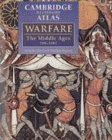



|



|
|

Manuscripts were written with quills, whose tips needed to be sharpened regularly with a knife. The medieval scribe used both hands to write: one to hold the quill, and the other to hold the knife for sharpening the quill and scraping off mistakes. The quills were dipped in inkhorns or inkwells, which contained ink made either from charcoal or from oak galls.
Manuscript books were mainly produced in Europe in the scriptoria of religious houses. There were secular illuminators and scribes who worked on a fixed charge. Books made of parchment could be on religious topics, such as the Bible or legends of saints; they could be on secular topics, such as history and romances; and they were also used as textbooks.
Most medieval universities required the professors to deposit a master-copy of the text at the university stationers, who in turn lent out parts of 10-12 sheets at time for students to copy them. This lending out of text by parts ensured that a small number of master copies could be circulated efficiently.
 Cambridge Illustrated Atlas : Warfare : The Middle Ages 768-1487
 Warriors of God : Richard the Lionheart and Saladin in the Third Crusade
 A History of the Crusades
 The Renaissance : A Short History

 Please read our Legal Statement and Privacy Policy.
|